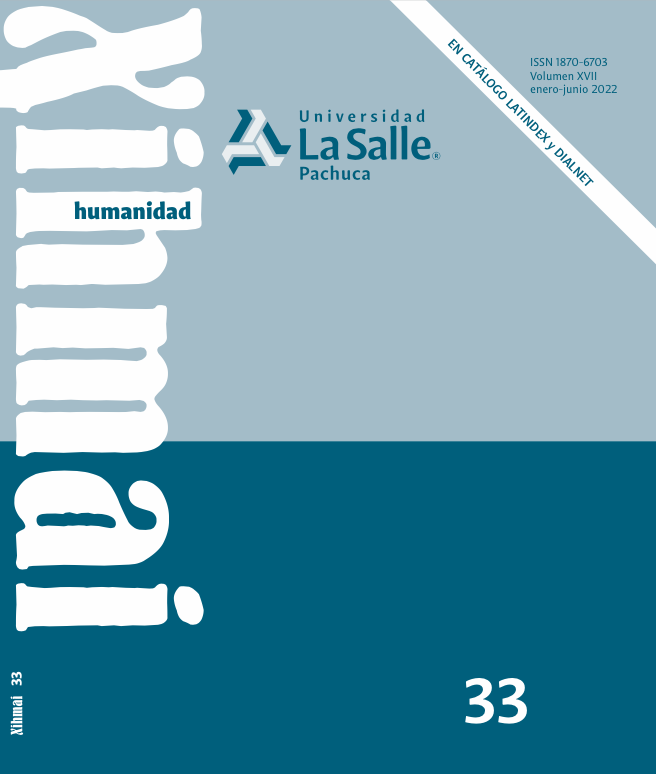ASSESSMENT OF THE EVALUATION OF THE ENGLISH COURSE THROUGH COMPUTERIZED TESTS
DOI:
https://doi.org/10.37646/xihmai.v17i33.543Keywords:
evaluation, computerized tests, English assessment, online testsAbstract
Because of the confinement caused by the COVID-19 pandemic, some teachers started using remote education tools. This included computerized examinations, administered online through digital platforms, which are graded in an automated manner, thereby questioning whether computerized evaluation could continue to be used when returning to face-to-face classes.
In order to compare traditional examinations with computerized examinations, this research used the qualitative approach, the research-action method and the data collection techniques of documentary analysis, survey and estimated scales. The computerized tests were used during a whole semester (September 2020-January 2021), proceeding to assess its use by the end of said semester.
In the end, traditional exams were found to be superior to online assessments. However, computerized exams have advantages that should be leveraged, making them an interesting option as complementary assessment in English courses.
Downloads
References
Aoun, J. E. (2018). Robot-Proof. Higher Education in the Age of Artificial Intelligence. MIT Press. DOI: https://doi.org/10.7551/mitpress/11456.001.0001
Aprender.org (2020). ¿Cuántos árboles se necesitan para hacer una hoja? [Mensaje en un blog] Aprender.org https://www.aprender.org/cuantos-arboles-se-necesitan-para-hacer- una-hoja/
Castillo, S. & Cabrerizo, J. (2010). Evaluación educativa de aprendizajes y competencias. Pearson Prentice Hall.
Consejo de Educación Inicial y Primaria [CEIP] (2020, marzo 23). Circular No2. Entremedios: construir cercanía en la distancia. http://www.ceip.edu.uy/documentos/normativa/tecnica/2020/Circula r2_20_TECNICA.pdf
Frodden, M.C.; Restrepo, M. I. & Maturana, L. (2004). Analysis of Assessment Instruments Used in Foreign Language Teaching. Íkala, 9(15), pp. 171-201. https://revistas.udea.edu.co/index.php/ikala/ article/view/3146 DOI: https://doi.org/10.17533/udea.ikala.3146
Harmer, J. (2014). How to teach English. Pearson.
Hernández, R.; Fernández, C.; Baptista, M. P.; Méndez, S. & Mendoza, C. P.
(2014). Metodología de la investigación. McGrawHill.
McVay, M. (2002). The Online Educator: A Guide to Creating the Virtual
Classroom. Routledge/Falmer.
Morgan, C. & O ́Reilly, M. (2002). Assessing Open and Distance Learners.
Kogan Page.
Quesada, R. (2006). Evaluación del aprendizaje en la educación a distancia “en línea”. RED. Revista de Educación a Distancia, (Número especial dedicado a la evaluación en entornos virtuales de aprendizaje), pp. 1- 15. https://www.um.es/ead/red/M6/quesada.pdf
Rodríguez, N. (2014). Fundamentos del proceso educativo a distancia: enseñanza, aprendizaje y evaluación. RIED. Revista Iberoamericana de Educación a Distancia, 17(2), pp. 75-93. https://doi.org/10.5944/ried.17.2.12679 DOI: https://doi.org/10.5944/ried.17.2.12679
Ryan, S.; Scout, B.; Freeman, H. & Patel, D. (2000). The Virtual University. Kogan Page.
Uribe, C.; Brito, L. & Müller-Marín, K. (2020, marzo 25). En tiempos de crisis, la UNESCO está presente. [Mensaje en un blog] UNESCO. https://es.unesco.org/fieldoffice/santiago/articles/la-unesco-esta- presente
Downloads
Published
How to Cite
Issue
Section
License
Copyright (c) 2022 Leonora Estrada Flores, Mabel García Mendoza, Esmeralda Irais León López, Mónica Loya Rangel, María Sánchez Santiago, Luis Fernando González Juárez

This work is licensed under a Creative Commons Attribution 4.0 International License.
Authors who publish in this journal agree to the following terms:
Authors retain copyright and grant the journal right of first publication, with the work licensed under a Creative Commons Attribution 4.0 License, which allows others to use the published work as long as they acknowledge the authorship of the work and its first publication in this journal.
Authors may make separate, additional contractual arrangements for non-exclusive distribution of the published version of the article in this journal (e.g., posting it to an institutional repository or publishing it in a book) as long as they clearly indicate that the work was first published in this journal.
Authors are permitted and encouraged to share their work online (for example, via institutional repositories or personal websites) prior to and during the manuscript submission process, as it can lead to productive exchanges and to increased and more rapid citation of the published work.









